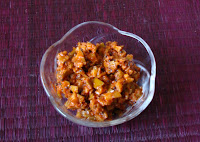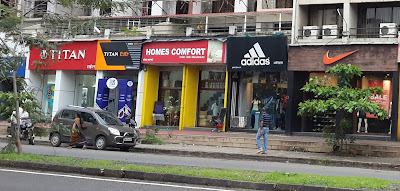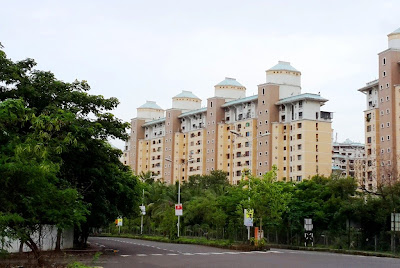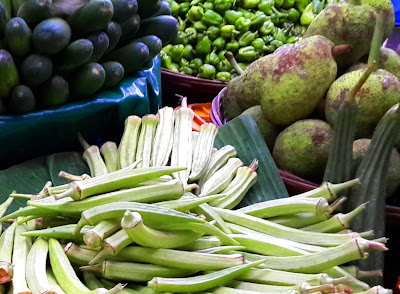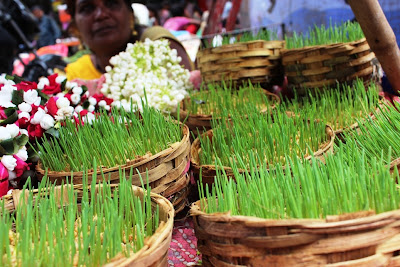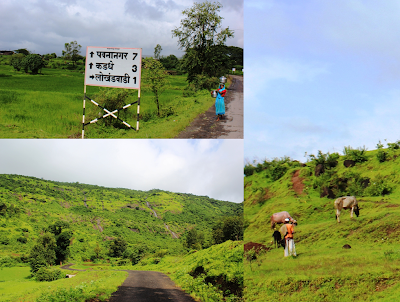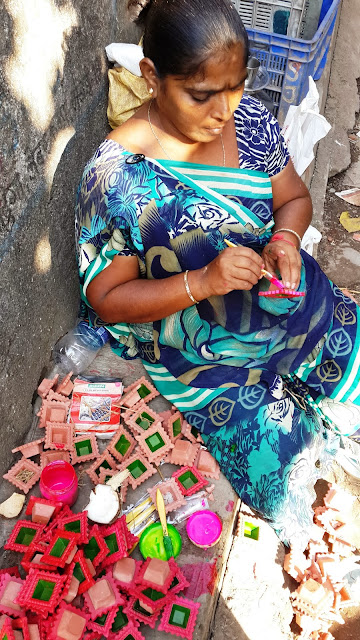- By Janaki Krishnan
![]() |
Alphonso mangoes
at our doorstep |
Just as the cuckoo awaits the arrival of spring, every Palakkad Brahmin lady awaits the arrival of the mango season. By March they begin appearing for sale.
Matunga market is ideal for mangoes, but sweet ripe mangoes are also delivered at our doorstep in Sion. Sweet mangoes have many uses in my cooking – mango sambar (for which I use the small ones the sellers call raswala, meaning ’juicy’), aamras to eat with puris, and of course Alphonso mangoes to enjoy on their own for their wonderful taste.
But as soon as I find out that mangoes have arrived in the market, one of the first things I do is to look for small green raw mangoes, to make Kadugumanga (‘Kadugu’ – mustard, ‘mangai’ – mango), a classic pickle from Kerala.
![]() |
| Kadugumanga - the No 1 pickle in our family |
To be eligible for Kadugumanga pickle, green mangoes have to pass various tests. They must be small, round (about 2-3 centimeters in diameter) and as beautiful as a bride. The mangoes must have their stalks attached, or else they cannot be preserved for long by pickling. Most importantly, the mangoes must be extremely sour!
![]() |
| The right mangoes for kadumanga pickle |
The best time to purchase mangoes is early in the morning, or between 3 to 4 pm when the crowds are not yet there in the market. This year, mangoes were sold at Rs.100 a kilo. They are usually sold by 2 and a half kilo measure.
It is said that all the mangoes in a bottle of Kadugumanga should be from the same tree. Well! I can’t make sure of that, but I do keep careful watch to make sure the seller does not mix different types of mangoes. No dark, elongated mangoes get into my basket of bright, round ones. Also, since I ask for mangoes along with the stalks, the sellers try to give me large bunches of mangoes, where a larger proportion of the bunch’s weight is not fruit, but stalk! I have become wise to this, however, and prefer to pick and pluck individual mangoes from the seller’s pile and add them to mine.
Side-note: Even if you do end up with a few stalk-less mangoes in your basket, never fear. These can always be used to make arachu kalaki (a side-dish that literally translates to ‘ground and mixed’). Arachu kalaki is made by brining the mangoes for a few months in saltwater, and then grinding them (they are by now almost falling apart) with coconut and chillies. Arachu kalaki is especially popular in poorer households – because even if there is not enough money to buy vegetables, the garden compound of every Kerala house usually has coconut and mango trees.
![]() |
Instant pickle from
small cut mango |
If not arachu kalaki, the offending mangoes can be cut into small pieces to make ready-to-eat fresh manga-kari – a pickle that is regularly featured in marriage feasts during this season.
Back to Kadugumanga: the entire pickling process takes about 2 weeks. As soon as the mangoes enter the kitchen, they have to be given a good bath. After washing and drying with a towel, the actual operations begin.
The mangoes are placed in a large vessel, and salt is added (1 measure of salt for every 5 measures of mango). When I was young, we bought large salt crystals which my mother cleaned and removed mud from. Nowadays, of course, we get refined salt. A spoonful of turmeric powder is also added for colour.
I toss the mangoes around in the vessel every day, so that each mango gets coated evenly with salt. After about two days, the mangoes begin to shrink and start to release liquids.
![]() |
| Tossing the mangoes |
![]() |
| The stage when it starts to release water |
It is only at this stage that the red chili and mustard paste is added. The paste is made by mixing red chilli powder and mustard powder with a little of the mango brine (not pure water). The amount of chilli powder varies from family to family, depending on how spicy you want it. I use the same amount of chillies as salt i.e. 1 measure of chillies for 5 measures of mangoes. I do not add too much mustard powder; about 2 tea-spoons for maybe 2 1/2 kilos of mangoes. In my childhood, we didn't use these powders – my mother ground the red chilies and mustard herself. She did most of the grinding with the back of a thick ladle, with minimal use of her hands – contact with skin was said to spoil the pickle. I wonder why? I’m not sure.
About a week later, comes the day to store the pickle away in a special barani (ceramic jar). Whenever I empty the pickles into this storage jar, I take care to switch on the fan to prevent mosquitoes (and whatever else is in the air) from falling into the pickle – a precaution that my mother used to take. A piece of cloth is tied around the jar’s mouth to keep it airtight, and the lid is placed over it.
![]() |
| One of my Kadugumanga batches this year. |
In a couple of weeks’ time, we begin using the liquid part of the pickle. Young children prefer this spicy liquid to the actual mango, which may be too spicy for them and burn their lips. Elders go for the pieces. The pickle is especially delicious with curd rice. In fact, once this pickle is declared ready to eat, more rice has to be cooked each time as the the entire household demands more! In our house, we also eat the pickle with kozhakattais (modaks), a savoury rice preparation. Every mango season, I make enough Kadugumanga to last an entire year, and also dispatch two large jars to each of my daughters’ households. Currently, we are in the process of finishing up the last remains of last year’s batch, to make room for the new.
![]() |
Fresh batch made this year.
As it becomes older, it will darken and thicken. |
![]() |
| Last year's batch, photographed now |
Credits: Text by Janaki Krishnan, with edits by Aishwarya PramodPhotos: Deepa Krishnan




















